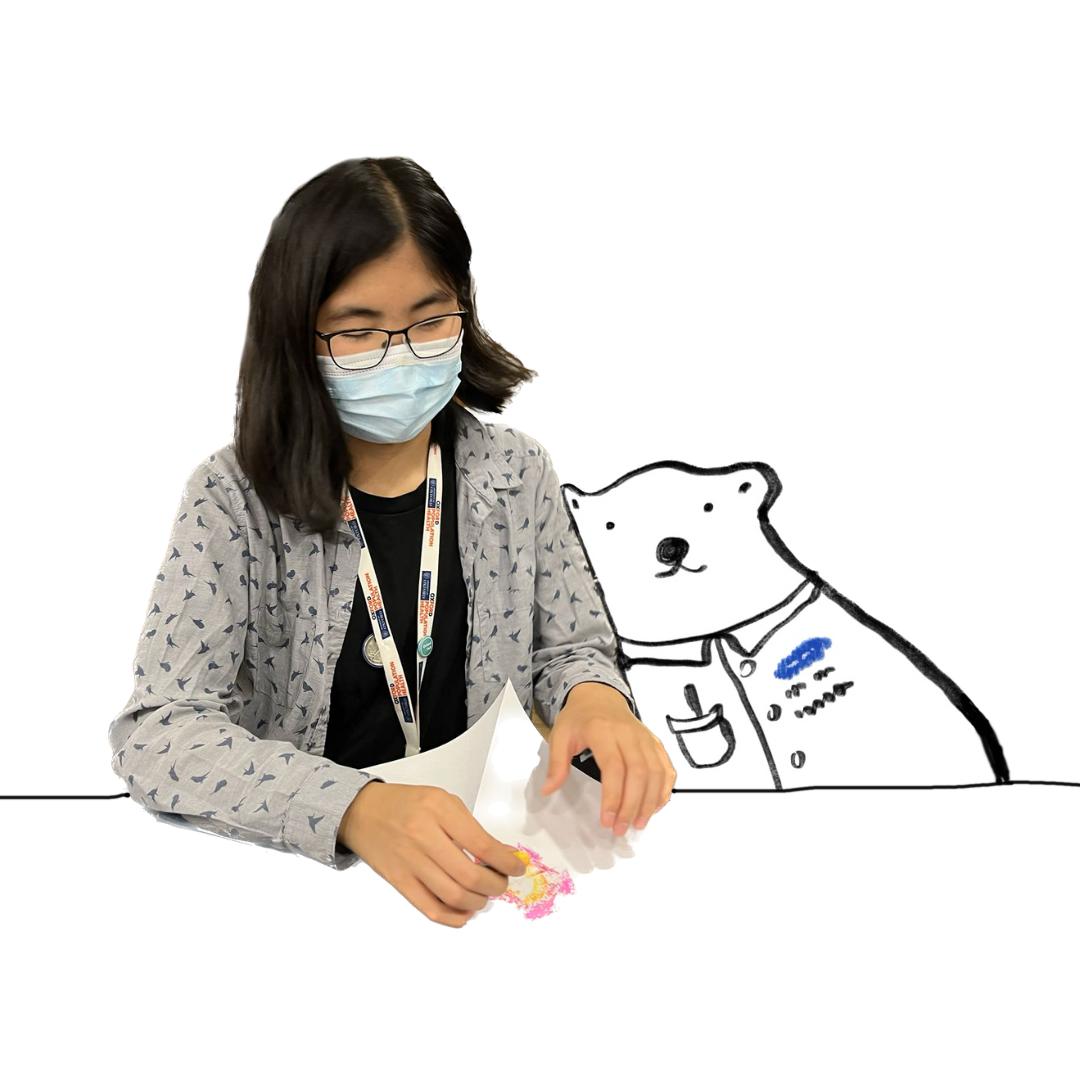Public engagement
In higher education, public engagement refers to “the myriad of ways in which the activity and benefits of higher education and research can be shared with the public” (definition from the National Co-ordinating Centre for Public Engagement). Here, I characterise the term more broadly and list any experiences where I have engaged, alone or in teams, with individuals and communities outside of the higher education “bubble” to bring about tangible outcomes. I continue to learn from public engagement experts about how to include the widest variety of publics in my work, especially those who are traditionally underserved.
As a communicator
- I spoke with children and families about DNA and heart disease risk at a public event in North Cambridge run by Abbey People, a local community charity (activity led by Dr Amy Mason)
- I ideated, organised, and led a public event during the 2024 Cambridge Festival to showcase our Blood and Transplant Research Unit’s work on donation safety and efficiency. I also participated in three other events during the Festival, which you can read about here!
- Inspired by my aforementioned social media work, I started Portraits for PPE, an Instagram page documenting the stories of UK health and social care staff who have died from COVID-19. The greatest challenge of this project was juggling sensitivity towards the loved ones of those portrayed while emphasising the importance of protecting these frontline workers to those who could affect real policy change.
- At the height of India’s second COVID-19 wave, I volunteered with the nonprofit thinktank Bridge India to design graphics for social media. By clarifying the scale and human impact of the crisis, my goal was to encourage donations towards the thinktank’s grassroots charity initiatives.
As an instructor
- With a £500 grant from Oxford Hub during my MSc, I ran a project called Blossoming Wards that delivered art from the public to patients at local hospitals. I facilitated at least an hour of art workshops weekly, guiding local residents with varying levels of experience to produce pieces they could be proud of. For more details about the project, read our impact report here!
As the “P” in PPIE
- Since my scoliosis diagnosis as a teen, I have engaged with researchers, clinicians, and artists to enhance the patient impact of their work.
- In secondary school, I facilitated support groups for young women with the same diagnosis in Kenya, discussing issues of self-esteem and treatment access to find solutions together.
- During my undergraduate degree, I interviewed Dr Nachiappan Chockalingam for the British Scoliosis Research Foundation’s magazine about his investigation of the biomechanics of scoliosis and its translations to clinical settings.
- Since June 2023, I have assisted in the development of “Shooting Pains”, a play about a young woman growing up with scoliosis. I’ve given feedback on nascent versions of the play (including a 2023 workshop and a 2024 rehearsed reading) and advised its creative team about the inclusion of diverse scoliosis narratives.
- Most recently, I have been a patient contributor to scoliosis studies based at Nottingham University Hospitals NHS Trust and the Royal National Orthopaedic Hospital.
- As a regular blood donor and a participant in the STRIDES study, I advocate for donor registration regularly through my own social networks. For example, after my first donation, I produced this infographic to inform others (especially young people) about the light-hearted side of the donation process. I have also suggested improvements to donor communications used by the English blood service, which I’ve detailed here.
As a product designer
- As the co-founder of WordSmith, an app for people with word-retrieval difficulties caused by stroke, dementia, or learning disability, I spoke with potential users and speech and language therapists to learn about what they value in assistive technology software. With a volunteer team, I then implemented this feedback into our iterating prototypes.
- For a digital health module during my undergraduate studies, I ideated emBRACE, a software helping adolescent idiopathic scoliosis patients to customise their orthotics. When considering whether I should make the technology come to life, I spoke to patients, families, and clinicians about the challenges they face with treatment adherence. Through these conversations, I realised that my idea wouldn’t fill a pressing or prevalent need and therefore halted its development.
